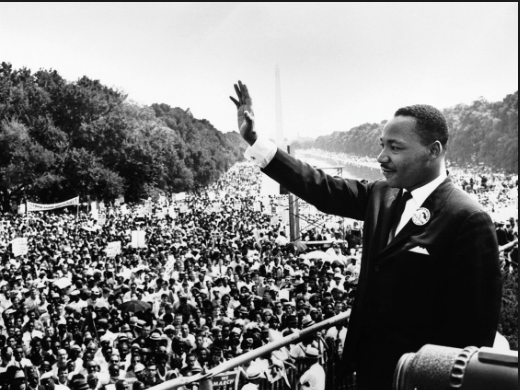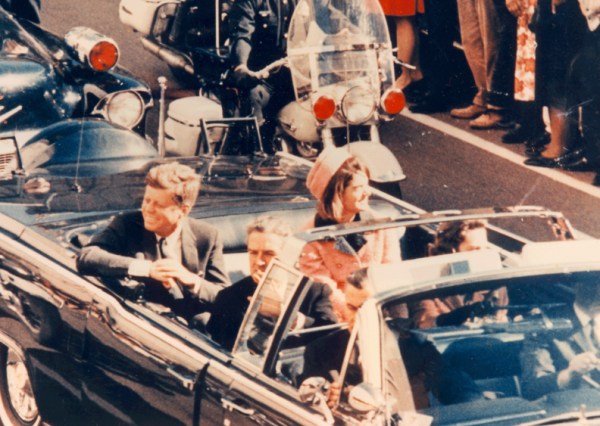Author: Phoebe Goldenberg
 Kenneth Goldsmith thinks his work is “mimetic and uncreative.” If you were to pick up his most recent book, you would probably agree–and question the judgement of his publisher. His book, published on March 12, 2013, called, “Seven American Deaths and Disasters,” lacks colorful embellishments. Goldsmith has merely collected and transcribed the original radio and television broadcasts of seven historical moments from the Columbine shootings to the death of Michael Jackson. He fails to leave nothing out–seriously nothing. It includes all awkward pauses, stuttered words and banal advertisements that frame the articulation of all these tragedies. Ultimately, the pages of Goldsmith’s book rearrange themselves into a blurry question: What’s the point?
Kenneth Goldsmith thinks his work is “mimetic and uncreative.” If you were to pick up his most recent book, you would probably agree–and question the judgement of his publisher. His book, published on March 12, 2013, called, “Seven American Deaths and Disasters,” lacks colorful embellishments. Goldsmith has merely collected and transcribed the original radio and television broadcasts of seven historical moments from the Columbine shootings to the death of Michael Jackson. He fails to leave nothing out–seriously nothing. It includes all awkward pauses, stuttered words and banal advertisements that frame the articulation of all these tragedies. Ultimately, the pages of Goldsmith’s book rearrange themselves into a blurry question: What’s the point?
Asking this question may be “the point” itself. Kenneth Goldsmith is not a historian. He’s a poet, specifically, a conceptual poet. This is the key to decoding the message encrypted in what initially looks like blatant plagiarism. Goldsmith is not actually interested in the material events themselves but rather in the way history itself is recorded, repeated and preserved.
Recent American history is a continuum of events. While some are more profound than others, they are each part of a causal chain that can only exist when all of its elements are in tact. And yet, with each generational attempt to re-record history, we collapse it into  fewer and fewer moments. There is no special algorithm used to determine which events are most worthy of appearing in history books, documentaries and school curriculums. And yet, we tell ourselves that the events we continue to commemorate and retell are those which are most important.
fewer and fewer moments. There is no special algorithm used to determine which events are most worthy of appearing in history books, documentaries and school curriculums. And yet, we tell ourselves that the events we continue to commemorate and retell are those which are most important.
This justification is flawed. If we have no evidence of undocumented or forgotten events, how can we be certain that they were not, at one time, just as significant? By memorializing only seven “deaths” and “disasters,” Goldsmith’s book excludes dozens of events that were equally impactful such as the assassination of Martin Luther King, Jr. What happens when arbitrary omissions such as this one proliferate from one book to the next and, more importantly, from one generation to the next? If you imagine this process occurring over centuries and millenniums, the answer becomes clear–our selectivity begins to dictate not only the content of history books but our definitive history, its plot climaxes and excised pages.
Contrary to popular understanding, Goldsmith’s book reveals that history is not a form of knowledge, but rather a discrete incarnation of fiction. As we tell and retell history, we are constantly molding, filtering and editing it. Each chapter of “Seven American Deaths and Disasters” is not a transcription of an event itself but rather a transcription of one reporter’s perception of an event. The correspondent’s personal responses are communicated through opinions, side commentary, emphases and the details they have chosen to leave out. Even video footage fails to capture the contextual scope and nuances of any particular event. Although Goldsmith is simply duplicating these accounts, he also contributes to their subjectivity by selecting not only which reports to include in his book, but also which excerpts to cut from each selection.
We know history is full of errors and that it does not always truthfully represent what was and always has been, but we also pay little attention to how history is always changing, expanding, reimagining and forgetting itself.
For example, in a 1968 textbook edited by John M. Bloom, John F. Kennedy is portrayed as a tragic hero with a legacy that exemplified the American spirit. However, studies have shown that more recent textbooks have punctured his celebrity-esque glamour, recasting  his accomplishments as errors and his idealism as a tactful facade. So what is the truth in history? Is it just a matter of opinion?
his accomplishments as errors and his idealism as a tactful facade. So what is the truth in history? Is it just a matter of opinion?
Perhaps Goldsmith is trying to tell us that we’re asking the wrong questions. He wants us to recognize that history has no objective truths–only the subjective narratives we pass on and inherit. But we should be careful to not allow ourselves to see history as an omniscient artifact, but rather as an ever-changing prism of human stories that we are actually responsible for creating, manufacturing, judging and improving.
“Seven American Deaths and Disasters” has a self-aware objective: News stories, which popularize the events that go into history books, are edited. Goldsmith, himself, has edited what content goes into his book. But by reading about these historical events through the sources that reported on it first, you realize that someone, a middleman, taught you this history. Further, you have been a compliant participant in its conception or entombment. Goldsmith’s book awakens the realization that history’s truths really begins by examining its reporters and what yard was spun from a select chunk of them. And it rouses us to take a more active part in the history-making and history-reporting.
Comment |

 Share on Facebook
Share on Facebook
 Tweet
Tweet
 Add My Story
Add My Story






